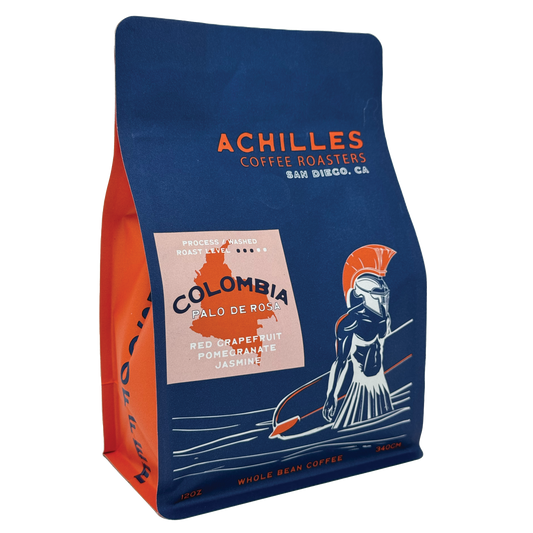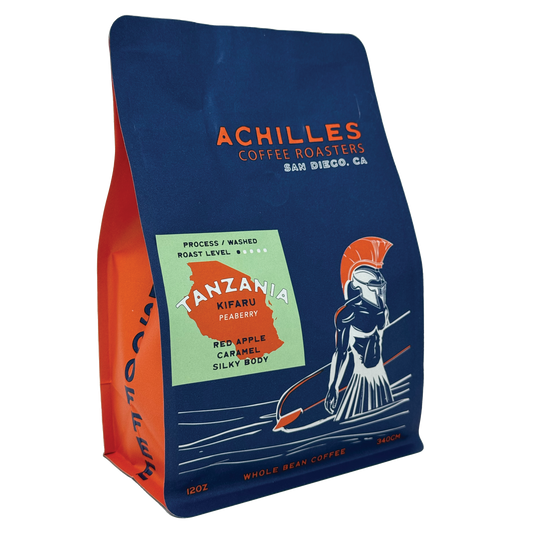Coffee is an extraordinary beverage, revered worldwide not only for its rich flavors and energizing qualities but also for the intricate journey it undergoes before reaching your cup. While many coffee enthusiasts focus on the origin of the beans—the soil, altitude, and climate where the coffee plants are grown—or the brewing technique used to prepare it, one of the most pivotal yet often overlooked factors in shaping coffee’s final character is the processing method applied to the coffee cherries after harvest.
Processing is the critical step that transforms freshly picked cherries into the green coffee beans ready for roasting. This stage profoundly influences the coffee’s flavor profile, body, clarity, acidity, and sweetness. The way the fruit surrounding the coffee seed is removed and how much of its natural sugars and mucilage remain on the bean during drying can create dramatically different taste experiences.
By understanding the three primary processing methods—washed (also called wet), natural (dry), and honey (pulped natural)—you gain valuable insight into the craftsmanship that goes into every batch of coffee. Each method offers unique qualities, highlighting different aspects of the bean and contributing distinct textures, brightness, and flavor complexities. This knowledge empowers you to make more informed choices when selecting coffees, enabling you to pick beans that truly resonate with your personal palate and brewing preferences, elevating your coffee enjoyment from a simple drink to an engaging sensory experience.
The Basics of Coffee Processing
Before coffee beans can be roasted and transformed into the aromatic, flavorful coffee we know and love, they must first be carefully extracted from the coffee cherry—the fleshy fruit that encases the coffee seed, commonly referred to as the “bean.” This extraction is far more than a simple removal; it is a delicate and crucial phase called processing, which involves separating the bean from the cherry’s outer layers, including the skin, pulp, and a sticky layer known as mucilage that lies just beneath the skin.
The processing method used at this stage has a profound effect on the final character of the coffee. It influences not only the flavor and aroma but also the acidity, sweetness, body, and clarity of the brewed cup. While there are numerous ways to process coffee cherries across different regions and producers, the three most widely recognized and practiced techniques in specialty coffee are washed (also called wet), natural (dry), and honey (pulped natural) processing.
Each of these methods involves different steps for removing the cherry’s components and preparing the beans for drying, and they impart distinct qualities to the coffee. For example, some methods emphasize clarity and brightness by removing more fruit before drying, while others preserve fruit sugars on the bean to enhance sweetness and body. Understanding these processing techniques provides valuable insight into the journey your coffee has taken and helps you appreciate the nuanced flavor profiles that result from this essential stage of coffee production.
1. Washed (Wet) Process
Overview:
The washed process, also referred to as the wet process, is one of the most common and traditional methods of coffee processing. It involves removing the outer skin and pulp of the coffee cherry soon after harvest, followed by a careful fermentation step that helps strip away the sticky mucilage layer surrounding the beans. This process uses ample water, which results in beans that are clean and bright in flavor, and it is highly favored for producing coffees with clarity and crisp acidity.
How It Works:
Freshly harvested coffee cherries are first passed through depulping machines that mechanically remove the outer skin and the majority of the pulp, leaving the beans coated in a slimy, sugary layer known as mucilage. These beans, still wet and sticky, are then transferred into fermentation tanks filled with water. The beans soak here for a period ranging from 12 to 72 hours depending on factors like temperature and altitude. During this fermentation, naturally occurring enzymes and microbes break down the mucilage, loosening it from the beans.
After fermentation is complete, the beans undergo thorough washing with clean water to remove all residual mucilage. This washing step is crucial to achieving the bright and clean flavor profile associated with washed coffees. Once cleaned, the beans are laid out to dry in controlled environments, either on raised drying beds, patios, or mechanical dryers, until they reach the optimal moisture content for roasting—usually around 10-12%.
Flavor Profile:
Coffees processed using the washed method are prized for their clean, bright, and vibrant flavor. Because much of the fruitiness and sugars are removed during washing, these coffees tend to highlight the bean’s intrinsic qualities such as its natural acidity and clarity. You can expect a cup that bursts with crisp acidity and pronounced brightness, often accompanied by delicate floral, citrus, and herbal notes. The flavor tends to be more transparent, allowing the distinct characteristics of the coffee varietal and terroir to shine without overwhelming sweetness or heaviness. This makes washed coffees particularly popular among those who favor clarity and sharpness in their brews.
Body and Clarity:
Washed coffees typically exhibit a light to medium body, meaning the mouthfeel is clean and smooth without being heavy or syrupy. The washing process strips away most residual sugars and fruit particles, resulting in a cup with high clarity and definition. This transparency in flavor allows drinkers to experience subtle nuances and complex layers that might be masked in other processing methods.
Sweetness:
While washed coffees are known for their brightness and acidity, they also possess a moderate level of natural sweetness. The sweetness tends to be balanced and subtle rather than overt, often described as clean and crisp rather than syrupy. This moderate sweetness works in harmony with the vibrant acidity to create a refreshing and well-rounded cup.
2. Natural (Dry) Process
Overview:
Natural processing, also known as dry processing, is the oldest and simplest coffee processing method, dating back centuries to when water was scarce or unavailable for washing coffee cherries. Unlike washed processing, natural processing involves drying the entire coffee cherry intact—skin, pulp, mucilage, and all—before the dried fruit is removed from the bean. This approach allows the bean to interact closely with the fruit during drying, profoundly influencing the coffee’s flavor profile.
How It Works:
After harvest, whole coffee cherries are carefully spread out in thin layers on large drying patios, rooftops, or raised drying beds. These drying surfaces are chosen to provide good airflow and sunlight exposure, which are essential for even drying and preventing mold or fermentation issues.
The cherries must be regularly turned and raked throughout the drying period to promote uniform drying, avoid moisture pockets, and reduce the risk of spoilage. Depending on climate conditions like temperature and humidity, this drying phase can last anywhere from two to four weeks, sometimes longer in cooler or wetter environments.
Once the cherries reach the desired moisture content—generally around 11-12%—they are mechanically hulled to remove the entire dried outer layer, including skin, pulp, and parchment. This reveals the green coffee bean inside, ready for sorting, grading, and roasting.
Flavor Profile:
Natural processed coffees are renowned for their intense fruitiness and bold sweetness. Because the beans dry within the intact cherry, they absorb sugars and aromatic compounds from the fruit over an extended period. This interaction imparts rich, complex flavors that can be quite distinct from washed coffees.
Typical flavor notes include ripe berries such as blueberry or raspberry, tropical fruit like mango or pineapple, and sometimes jammy or fermented undertones that add depth and character. These coffees often have a wine-like quality, with juicy, syrupy sweetness and bold, expressive fruit flavors that linger on the palate.
Body and Clarity:
Natural coffees tend to have a heavier, fuller body, offering a luscious, syrupy mouthfeel that many coffee lovers find satisfying and indulgent. However, this richness can come with trade-offs in clarity; the cup can sometimes be less clean and more complex or layered with subtle fruit residue. This complexity may introduce a slight muddiness or thickness that contrasts with the crisp transparency found in washed coffees.
Sweetness:
One of the hallmarks of natural processing is the high natural sweetness present in the final cup. The prolonged contact between the bean and the sugary fruit during drying enhances sugar absorption, resulting in a coffee that often tastes noticeably sweeter and more luscious than its washed counterparts. This sweetness, combined with the fruity intensity, makes natural coffees a favorite for those seeking a rich, dessert-like coffee experience.
3. Honey (Pulped Natural) Process
Overview:
Honey processing is a unique and increasingly popular hybrid coffee processing method that strikes a balance between the clean, bright characteristics of washed coffees and the rich, fruity qualities of natural processed beans. This method involves removing the coffee cherry’s outer skin and some of the pulp while deliberately leaving varying amounts of the sticky mucilage—the sugary, gelatinous layer that surrounds the bean—intact during drying. This retained mucilage plays a crucial role in flavor development, creating distinctive sweetness and body in the final cup.
How It Works:
Immediately after harvesting, the coffee cherries are mechanically depulped to remove the outer skin and some of the fruit pulp. Unlike washed processing, however, the mucilage layer beneath the pulp is not washed away; instead, it remains clinging to the beans.
The beans, still coated with this mucilage, are then spread out to dry—typically on patios, raised drying beds, or rooftops—where they slowly lose moisture over days or weeks. During this drying phase, the mucilage gradually dries onto the bean’s surface, infusing sugars and flavor compounds as it dehydrates. This controlled drying with mucilage intact differentiates honey processing from both washed and natural methods.
Variations:
The term “honey” refers to the amount of mucilage left on the beans, and there are several subcategories that describe this:
-
White honey: Most of the mucilage is removed, resulting in a lighter drying time and a more subtle sweetness with less body.
-
Yellow honey: A moderate amount of mucilage remains, offering a balanced sweetness and medium body.
-
Red honey: A greater quantity of mucilage is left, producing richer, more pronounced flavors and sweetness, often with deeper complexity.
-
Black honey: The highest mucilage retention, with long drying times that lead to intense sweetness, full body, and a deeply syrupy character.
Each variation affects drying time, flavor intensity, and body, allowing producers to tailor the coffee’s profile to their desired style.
Flavor Profile:
Honey-processed coffees combine some of the best traits of washed and natural coffees, resulting in a cup that is both flavorful and approachable. The sweetness is more pronounced than washed coffees, thanks to the retained mucilage, yet the cup maintains more clarity and brightness than natural processed coffees. You can expect a balanced flavor with juicy, sugary notes reminiscent of caramel, stone fruits such as peach or apricot, and occasionally hints of tropical fruit or honey-like syrup. This complexity often appeals to those looking for a sweet but not overpowering coffee with a pleasant acidity and well-rounded body.
Body and Clarity:
The body of honey-processed coffee typically ranges from medium to full, delivering a smooth, satisfying mouthfeel. Its clarity lies somewhere between the crisp, clean finish of washed coffees and the heavier, more complex character of natural coffees, striking a pleasing balance that highlights both sweetness and nuance.
Sweetness:
Honey coffees offer a sweetness level that exceeds washed coffees but usually remains less intense than natural processed beans. The sweetness is often complex, layered with fruity and sugary undertones derived from the mucilage, making these coffees especially appealing to those who enjoy nuanced, flavorful cups without overwhelming heaviness.
How Processing Affects Your Coffee Experience
Understanding these coffee processing methods is key to appreciating why coffees can vary so dramatically in flavor and texture, even when they come from the same farm, region, or varietal. Processing acts as a critical bridge between the raw characteristics imparted by the coffee’s origin—such as soil, climate, and altitude—and the final flavor profile experienced in your cup. It shapes the way acidity, sweetness, body, and clarity present themselves, working in tandem with roast level and brewing method to create the coffee’s overall balance and mouthfeel.
If you gravitate toward bright, crisp, and clean coffees that highlight vibrant acidity and delicate floral or citrus notes, washed coffees are an excellent choice. The removal of fruit and mucilage early in the process preserves the bean’s clarity and brightness, making these coffees ideal for those who enjoy a light, refreshing cup with defined origin characteristics.
For those who prefer rich, juicy, and full-bodied coffees, natural-processed coffees provide a distinctive experience. Because the beans dry inside the whole cherry, they absorb sugars and fruity compounds that lead to pronounced sweetness, often with complex berry, tropical fruit, or wine-like flavors. This process adds depth and complexity but can also reduce clarity, creating a luscious, syrupy cup that’s bold and satisfying.
If you’re seeking a balanced coffee that offers the best of both worlds, honey-processed coffees present a delicious middle ground. They combine the clarity and brightness of washed coffees with the sweetness and body contributed by the retained mucilage during drying. This results in a cup that is smooth and flavorful, with juicy sweetness and moderate acidity—a versatile option for those who want both complexity and approachability.
By understanding these processing methods, you can make more informed choices tailored to your personal taste preferences and enjoy a wider range of coffee experiences beyond just origin and roast.
Final Thoughts: Choosing Coffee by Processing Method
As you continue to explore the world of coffee, one of the most enlightening exercises is to taste the same coffee varietal or origin processed through different methods. Sampling a washed, natural, and honey-processed version of the same bean can reveal just how dramatically processing influences flavor, body, and aroma. You might find that the washed coffee offers a bright, clean cup highlighting crisp acidity and floral notes; the natural-processed counterpart bursts with juicy, fruity sweetness and a heavier body; while the honey-processed version strikes a balance with its smooth mouthfeel and layered sweetness. This comparative tasting not only sharpens your palate but also deepens your appreciation for the artistry involved in coffee production.`
Ultimately, there is no “best” processing method—only the one that best suits your individual taste preferences and the experience you seek from your cup. Coffee’s incredible diversity is part of what makes it such a beloved beverage worldwide, and processing methods form a vital chapter in the journey from farm to cup. They help transform raw green beans into an array of flavors and textures that cater to a wide spectrum of coffee lovers.
When purchasing coffee, be sure to look for information about the processing method on the packaging or inquire directly with your roaster. Armed with this knowledge, you can make intentional choices that align with your flavor preferences. Whether you’re drawn to the sparkling clarity and brightness of a washed coffee, the rich and juicy sweetness of a natural, or the harmonious balance of a honey-processed brew, understanding processing methods empowers you to select coffees that will deliver the taste experience you desire every time.








